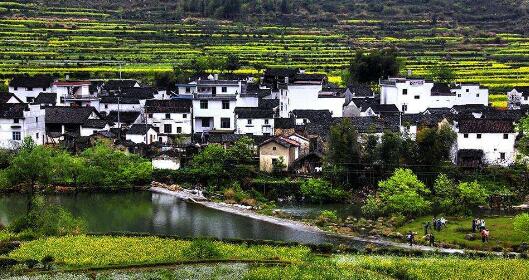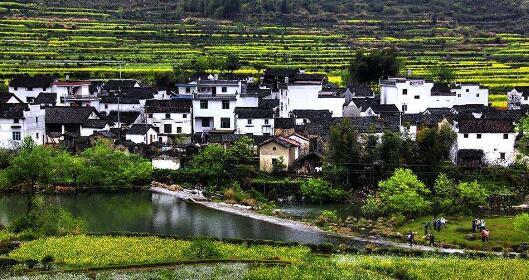
Over the past two years and more, Jiangxi province has adhered to the guidelines from the central government and devised a green development path with local characteristics, which promotes both environmental protection and economic development and helps the province take on a new look.
Jiangxi has pioneered many innovative approaches in China, including the mechanism for ecological compensation covering all the river basins of the province and the evaluation system based on both green development assessment and ecological progress.
In addition, Jiangxi has thoroughly implemented the "river chief system", "lake chief system" and "forest chief system" which hold officials at all levels accountable for ecological protection.
Guided by innovation and prioritizing reform, Jiangxi keeps improving its ecological protection system. Of the 38 key reforms specified for the national ecological civilization pilot zones, Jiangxi has adopted 23 and completed more than 220 key tasks.
Jiangxi has formed an economic system geared towards green, low-carbon and circular development. Aviation, IoT and traditional Chinese medicine (TCM) are flourishing. Smart farms, community supported farms, and the "production base + central kitchen + restaurant" catering mode are springing up.
Jiangxi has prioritized ecological progress and green development and therefore seen the contribution by green development to economic growth rising – the forestry total output has reached 417.1 billion yuan, which is among top 8 of China; the forest and wetland ecosystems have created comprehensive benefits worth 1.5 trillion yuan.
In Jiangxi, rural areas are now benefiting from tourism. Travelers can enjoy the scenic mountains and waters while experiencing local culture. Nowadays, travel without elaborate plans is widely welcomed. In the spirit of building with joint efforts and sharing the benefits, Jiangxi believes that a good environment can benefit the people, and has kept improving its capacity for supplying eco-products.
In Jiangxi, there are now 4,712 agricultural products that are nuisance free, green, and organic and have geographic indications. In addition, 130 forest country parks will be built by 2020.




 A single purchase
A single purchase









